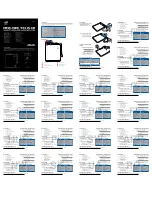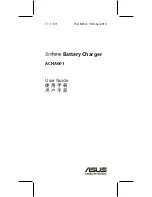
28
First shut off the mains voltage supply to all terminals for the
mains socket in use (switch off/unscrew the circuit breaker,
then switch off the residual current device). Only then, unplug
the charger from the power outlet.
WARNING!
Risk of explosion and fire!
• When charging batteries, it is imperative that you adhere
to the charging guidelines and safety instructions of the
respective battery and vehicle manufacturer.
• The charger must always be disconnected from the power
supply (wall socket) before the connection to the battery is
established or disconnected.
• This charger and the battery have to be positioned so that the
air can circulate. Keep a minimum gap of 5 cm around the
charger free. The charger and the battery must not be covered
and/or placed on a flammable underlay. During operation,
keep all objects (especially flammable material) which may
be damaged or set alight by high temperatures at a safe
distance. The charger and the battery being charged must
be set up stably so that they cannot topple over or fall.
• Do not charge the battery with the engine running or
the ignition switched on. Remember that certain engine
components (e.g. cooling fan) may start up automatically.
• Never charge the battery of a covered vehicle, as any build-up
of petrol fumes or leaked hydrogen gases under the cover
may ignite.
• During the charging process, make sure that the room is
sufficiently ventilated.
• Do not charge lead-acid batteries in a confined space. These
batteries vent explosive hydrogen gas which can be ignited
by sparks on the electrical connections.
• If handled improperly (incorrect battery type, wrong voltage
range or reversed polarity and simultaneous failure of the
charger), the battery may be overcharged and destroyed.
In the worst case, the battery may explode and cause
considerable damage as a result.
Содержание 60901901
Страница 41: ...41 ...















































